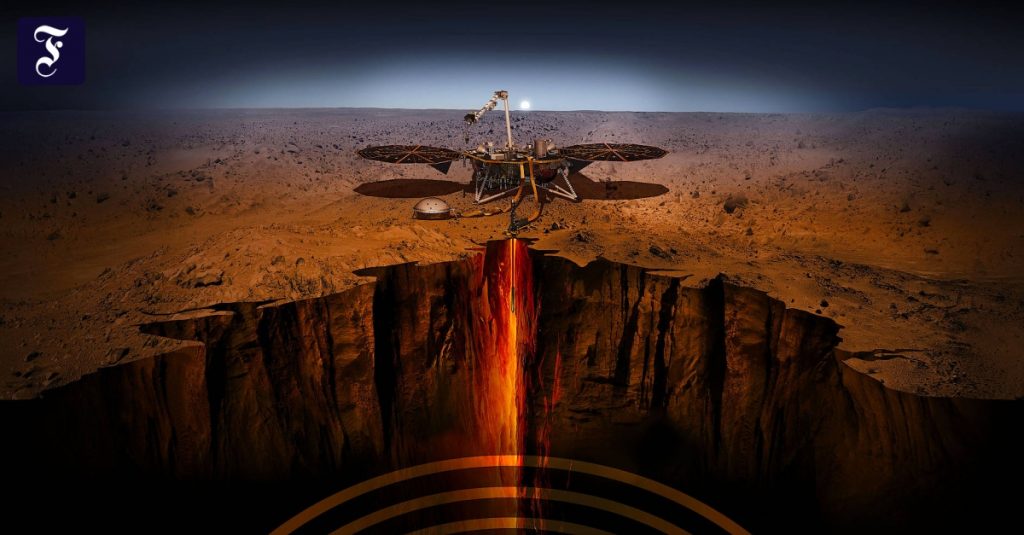NSIt really can’t be claimed that Mars will be stingy with news this year: China’s Zhurong Rover has now covered more than half a kilometer, found, among other things, its parachute, and its ingenious Mars helicopter dares ever more complex flight maneuvers, and perseverance is He just started collecting rock samples, and the Arab Mars probe sent the first samples of its scientific instruments. Now scientists for the InSight mission, which landed on Mars in 2018, are also reporting NASA in the journal Science with new findings. The SEIS instrument was on board at the time, a seismometer that has since been able to detect many Martian earthquakes: a large number of weak earthquakes in the crust, as well as a small number of stronger earthquakes with deeper origins – this was already announced as recently as .
On the basis of these earlier measurements, three studies have now reconstructed the previously unknown interior of Mars. Understanding this is important in order to be able to trace the formation of the planet, its tectonic and volcanic movements and the evolution of its global magnetic field.
A group led by Simon Stähler of ETH Zurich used the deep earthquake for this purposeTo understand the characteristics of the planet’s core. Seismic waves thrown into the core indicate that the radius of this central region is about 1,830 km, where the core, which is largely composed of iron and nickel, still appears to be liquid. This is slightly larger and less dense than previously thought. So it should also contain lighter elements such as sulfur. The data also indicates that Mars, unlike Earth, does not have a dense, insulating layer of bridgmanite in its mantle that would have prevented the interior of young Mars from cooling rapidly.
This in turn is important information if one is to understand the history of the magnetic field on Mars. Ancient magnetized crust rocks suggest that this magnetic field was once as strong as Earth. During the first few hundred million years, it was found to have been created in the core of rapid cooling by a thermally powered dynamo, later presumed by changes in the composition and state of the core, before finally disappearing 3.7 billion years ago. This turned Mars into a hostile barren desert, where the solar wind could now help unimpeded to allow the atmosphere to escape into interplanetary space.
Scientists working with Amir Khan, also from ETH Zurich, have dedicated their study of the upper layer of rock down to a depth of 800 km.. Their measurements indicate that the outer, solid, stable region, the lithosphere, is much thicker than that found on Earth. When trying to reproduce this Martian structure using models from its thermal evolution history, they found that there must be 13 to 20 times as many radioactive and thus heat-producing elements in the crust as there are in the mantle.
A third group led by Brigitte Knappmayer-Andron of the Pennsberg Seismic Station in Bergisch Gladbach has finally examined the crust of Mars. In the history of the Red Planet, this outer layer was formed early and under the influence of powerful volcanoes. In the seismic data, the researchers found evidence of two or three layers of crust under the landing site, according to which the thickness of the crust there will be about 20 or 39 kilometers. In both scenarios, crustal rocks would be less dense than surface material – an indication that this rock has repeatedly changed over time through geological processes, so that porous, fluid or filled rock of lower density can form. The new information should help improve models and evolution of the interior of Mars. More data will follow: The InSight mission will run through the end of 2022.

“Total coffee aficionado. Travel buff. Music ninja. Bacon nerd. Beeraholic.”









More Stories
Coral Seeding: Artificial Insemination Makes Coral More Heat Tolerant
Fear, Anger, and Denial: How People Respond to Climate Change – Research
LKH Graz: Using radiation to combat heart arrhythmias